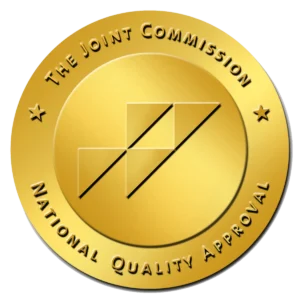People who aren’t familiar with therapy sometimes assume that all mental health therapy is the same. In reality, therapists can support patients with their mental health in many different ways. One of these is dialectical behavior therapy (DBT). DBT is just one of the evidence-based therapy modalities we offer at The Pavilion in Williamsburg, Virginia.
How DBT Developed
One of the most commonly used therapy types utilized today is cognitive behavioral therapy (CBT). CBT focuses on teaching people to identify negative thought patterns and think differently.
DBT grew out of this form of therapy and was initially developed to treat people with borderline personality disorder in the 1970s and 1980s. DBT shares many commonalities with CBT. Where the two modalities differ is that DBT does not label any thoughts as wrong or invalid. It instead focuses on dialectics, a way of thinking that acknowledges that two seemingly opposed ideas can both be true.
Examples of Dialectics
Dialectics are two statements that may seem to contradict one another, but which can still both be true at the same time. For example, it can be simultaneously true that a person with a mental health disorder is doing the best they can to cope with a difficult situation and also true that they are capable of learning more skills and doing better.
Another example might be that people in a relationship can simultaneously love each other very much and also be annoyed by behaviors that the other person chooses. The acceptance of polarized ideas encourages patients in DBT to find a middle, more moderate path between potentially unhealthy extremes.
Four Strategies of DBT
DBT helps patients by giving them four types of tools to manage difficult emotions. These are:
- Distress tolerance – acknowledging that it is impossible to avoid all stress and pain that exists and that it is possible to learn to handle these uncomfortable experiences without resorting to self-harm, impulsivity, or substances.
- Emotional regulation – once a person becomes more able to recognize their emotions, then they can learn to manage them better.
- Mindfulness – staying focused in the present moment instead of worrying about the past or future by observing, describing, and participating in what is happening right now.
- Interpersonal effectiveness – addressing a wide range of relationship management techniques, including asking for what you want/need, setting boundaries, and dealing with conflict.
What DBT Can Help to Treat
DBT can be applied in a wide range of situations where the patient is engaging in behaviors that are not helpful to them. It is frequently utilized to address:
- Self-harm
- Borderline personality disorder
- Suicidal ideation
- Substance use disorders
- Bipolar disorder
- Attention deficit hyperactivity disorder (ADHD)
- Depression
- Anxiety
What DBT Looks Like
DBT can include several different pieces, which often include:
- One-on-one therapy that occurs at least weekly for around an hour and allows the individual to process high-priority events that occur in their life and discuss ways they could respond differently to similar events in the future. The sessions focus on helping the person develop a life worth living.
- Group skills training with one or more trained therapists to facilitate the group, also offered once per week, often for 1.5-2.5 hours per session.
- Phone support that allows patients to access therapists between sessions for added support. This option is available on an as-needed basis.
- Homework to practice the skills discussed in group and individual sessions. Examples of worksheets that are utilized in DBT are available at various locations online. These generally focus on the four strategies of distress tolerance, emotional regulation, mindfulness, and interpersonal effectiveness.
Results of DBT
DBT has been found to:
- Decrease the frequency and severity of suicidal behavior
- Shorten hospital stays
- Reduce ER visits
- Decrease depression and anxiety symptoms
- Decrease anger
- Increase ability to build and sustain relationships
How Long DBT Takes to Work
It is important to recognize that DBT and other therapy modalities do not instantly take away every symptom a person has. What therapy does is make it easier for people to manage their mental health conditions by increasing their control over their behaviors. Studies of DBT have found that this outcome is often possible in as little as four to eight months. It can take several years, however, to achieve maximum results, and every individual is different in how they respond to particular mental health interventions.
At The Pavilion in Williamsburg, we are dedicated to finding innovative, evidence-based practices that support our clients in regaining and maintaining long-term mental health. DBT is an important part of this strategy.






